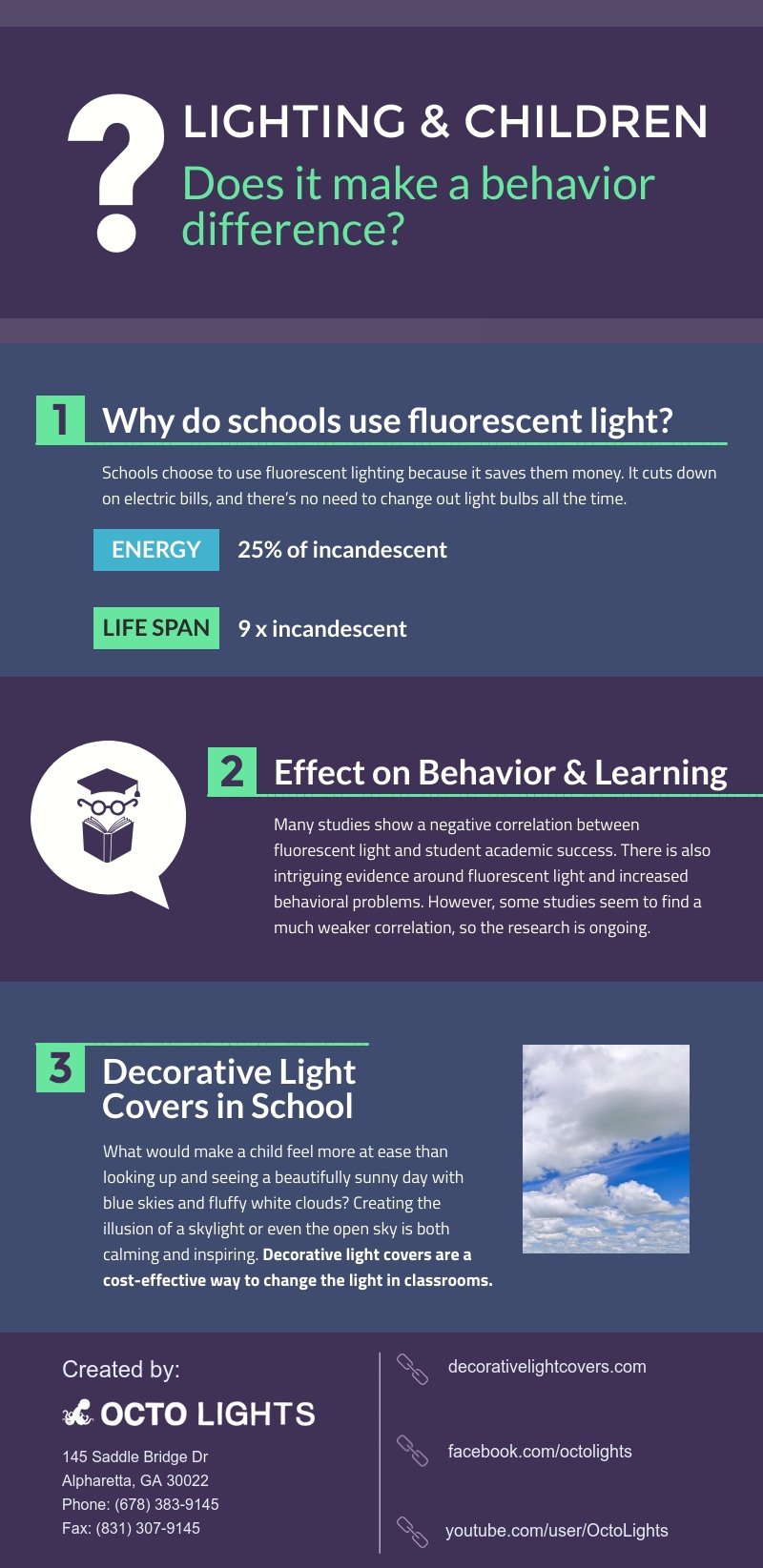
Lighting and Children – Does it make a behavior difference?
21st Mar 2019
Everyone has been inside a classroom at some point in their lives. Whether it was for elementary school, middle school, high school, or college, almost all classrooms have one thing in common, fluorescent lights. The hum of those fluorescent lights overhead illuminates each one of these classrooms just the same. But is that the only thing that the fluorescent lighting is providing? Or is it doing something else as well? Could the fluorescent lighting be doing something to children? Educational experts and researchers have been asking about the relationship between lighting and children for a long time. Could fluorescent lighting be affecting the way a child is behaving in school? Is fluorescent lighting making children hyperactive? What about children with special needs like autism? Perhaps it is time to consider these questions and more.

Fluorescent Light in the Classroom
Why is it that fluorescent lighting is used in classrooms everywhere? The answer is in the numbers. Fluorescent lighting uses a lot less energy than regular light bulbs, reducing energy costs. Fluorescent lights have also been proven to last a lot longer than incandescent lamps, as much as twenty to twenty-five times longer. So schools choose to use fluorescent lighting because it saves them money. It cuts down on electric bills, and there’s no need to change out light bulbs all the time. Schools usually run on a pretty tight budget. So any way they can save money will help them stick to their budget. But is fluorescent lighting really worth the money it saves if it has an adverse effect on children’s behavior?
The Science Behind Lighting and Children
There is a growing body of science on the topic of lighting and children. Initially, most of the research focused on fluorescent light in schools. However, the past few years have seen the widespread adoption of personal electronic devices (i.e., smartphones) by young people, and much of the research has shifted. Many researchers are now studying what happens to young people when they are exposed to blue light from electronic devices, especially at night. The science is intriguing, but still inconclusive.
It is clear that children, and especially teens, are sleeping less, which is terrible for their health. The fluorescent light in schools has also been called into question. Many studies show a negative correlation between fluorescent light and student academic success. There is also intriguing evidence around fluorescent light and increased behavioral problems. However, some studies seem to find a much weaker correlation, so the research is ongoing.
Whether the harmful effects of fluorescent light are conclusively proven or not, schools everywhere will continue to use them. The cost savings are too great, and the cost of replacing them is too high for most school budgets. But can anything be done to help make them a better source of lighting for children? There is one proven solution, decorative light covers.
Decorative Light Covers in School
Imagine a child looking up, and instead of just some boring fluorescent light, they see a starry night sky. Or how about a beautiful sunset? What if they see a school of fish swimming amongst vibrantly colorful coral reefs? This is all possible with beautiful fluorescent light covers for classrooms. Decorative light covers can turn boring, bland fluorescent lights into beautiful, bright pieces of inspiration.
What would make a child feel more at ease than looking up and seeing a beautifully sunny day with blue skies and fluffy white clouds? Creating the illusion of a skylight or even the open sky is both calming and inspiring. And that’s precisely what decorative light covers do. They help a child feel more relaxed, reduce anxiety, and create a calmer, happier child. And a happy child is a child who will get better grades, misbehave less, and generally succeed in school!

